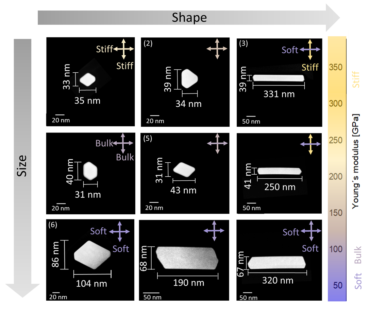„Good vibrations” on the nano-scale

Not only the Beach Boys long for the “good vibrations” in their song of the same name: Vibrations are also desired on the nano-scale. Vibrations look beautiful, but they can also provide information about material properties.
Derived from the ancient Greek word for dwarf (= nnos), the prefix “nano” in the word nanometer denotes the billionth part of a meter (1 nm = 10-9 m). The Chair for Micro- and Nanostructural Research (IMN) of Prof. Spiecker examines the material behavior of nanomaterials with the help of electron microscopy and has made use of the vibration properties of nanowires.
Similar to the strings of a violin, nanowires can also be made to vibrate and thus produce a sound. The resonance frequency, i.e. the pitch, of the oscillation depends on the material geometry and the elastic bending behavior. In order to investigate this more closely, the two IMN researchers Lilian Vogl and Peter Schweizer examined the vibration behavior of a large number of metallic nanowires and made a surprising discovery: unlike macroscopic beams, wires on the nano-scale show an elastic behavior that is both the size of the wires as well as their shape (shape effect). Additional tensile tests confirm the observed effects and confirm the changed behavior of nanostructures. With their concise motto “Size and shape matter!”, The research team around Prof. Spiecker now wants to draw attention to the new findings on material properties on the nanoscale and to spread their “good vibrations”.
The publication appeared in the journal MRS Advances:
Lilian Maria Vogl, Peter Schweizer, Gunther Richter & Erdmann Spiecker
„Effect of size and shape on the elastic modulus of metal nanowires”
MRS Advances (2021)
https://doi.org/10.1557/s43580-021-00103-3